If you buy through our links, we may earn an affiliate commission. This supports our mission to get more people active and outside.Learn about Outside Online's affiliate link policy
The 11 Best Coolers of 2025
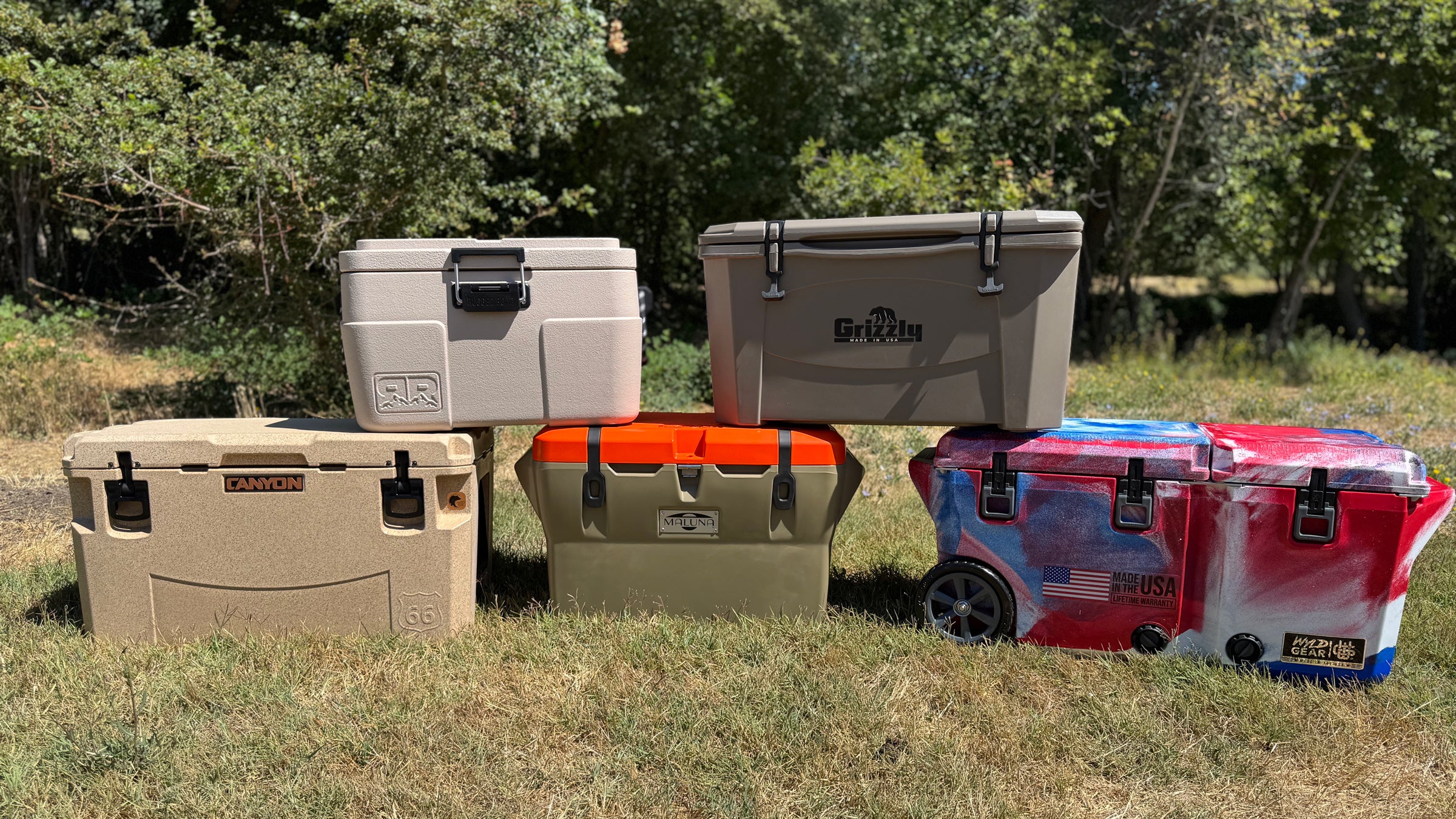
(Photo: Joe Jackson)
Table of Contents
Coolers are the gastroenterological core of every camping trip. If your cooler fails, your drinks are only lukewarm and your perishables go bad. While ice retention, exterior durability, and interior capacity are all important features to consider, we also think the devil is in the details when it comes to buying the right cooler. A massive amount of insulation won’t do you any good if the clasps don’t seal it closed, and spaciousness doesn’t matter if you can’t find things or carry it. After months of testing, here are the six best coolers for car campers, vanlifers, and beach bums.
Updated August 2025: After months of additional testing, we added five new coolers, including the Rugged Road 65, Canyon Pro 65, Maluna 50-Quart, Grizzly 60, and Wyld Gear 65 Freedom Series. We’ve also updated info and pricing on some of our previous picks that we still highly recommend.
Watch: How to Choose a Cooler
At a Glance
- Best Overall: Yeti Roadie 32 Wheeled ($375)
- Best Value: Igloo ECOCOOL Lattitude 52-Qt ($60)
- Lightest Weight: Rugged Road 65 ($375)
- Most Durable: Canyon Pro 65 ($370)
- Best Ice Retention: Maluna 50-Quart Cooler ($340)
- Most Classic Design: Grizzly 60 ($360)
- Best Organization: Wyld Gear 65 Freedom Series ($400)
- Best for True Connoisseur: Snow Peak Hard Rock 40-Qt ($648)
- Best for Boaters: Bote Kula 10 ($389)
- Best Braun for the Buck: RTIC 65-Qt Ultra Tough ($269)
- Best For Vanlifers: Dometic CFX-2 45 ($880)
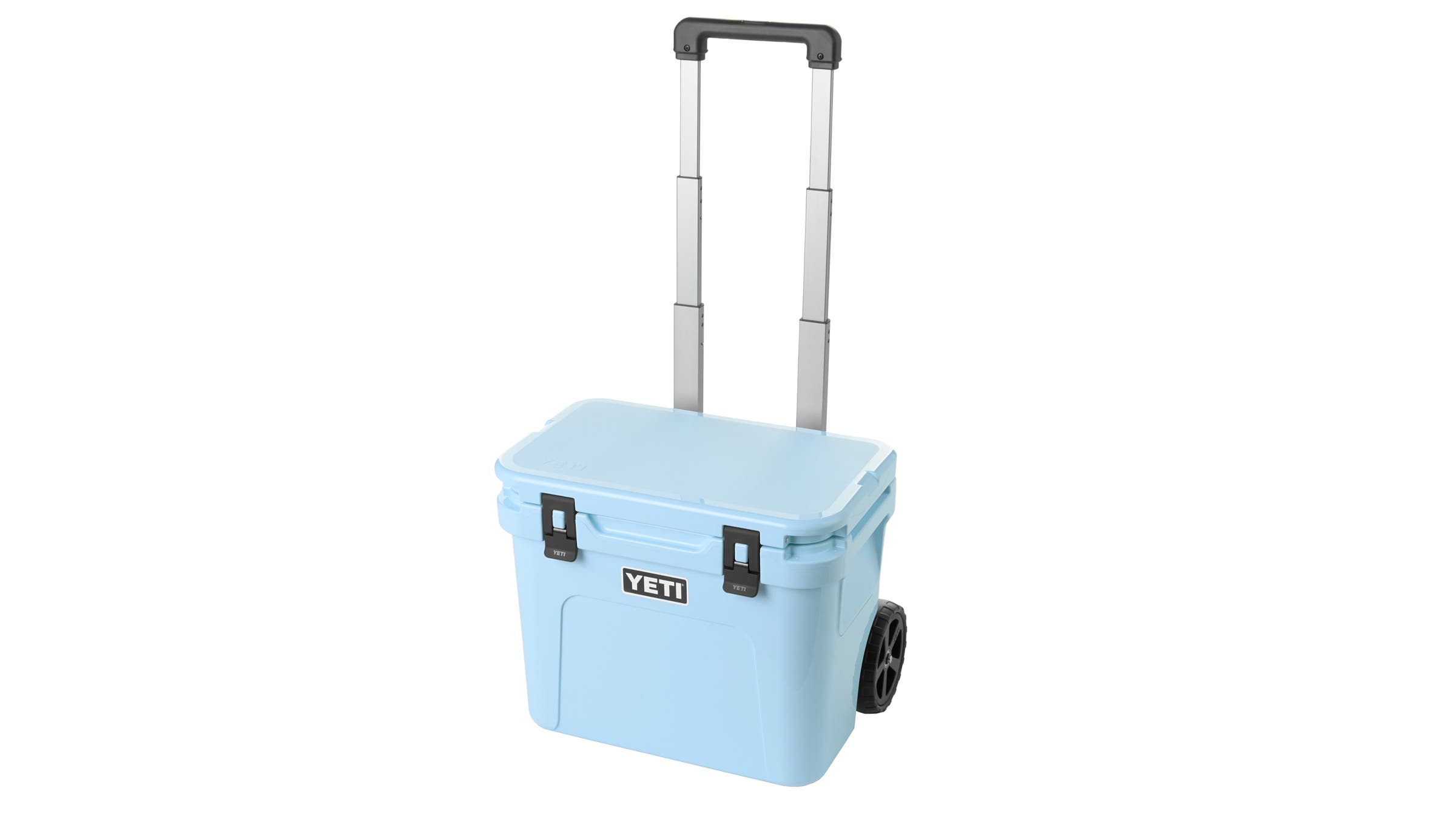
Best Overall
Yeti Roadie 32 Wheeled Cooler
External Dimensions: 16” x 18” x 21”
Capacity: 32 L
Weight: 24.5 lbs
Pros and Cons
⊕ The most portable cooler of our test
⊕ Retained coolness beyond testers’ expectations
⊕ Took months of beating with aplomb
⊗ Tall height means it has to be packed thoughtfully
For as much as we didn’t want to deliver yet another win to Yeti, it felt like betting with the house. We could not ignore how well the Roadie 32 Wheeled Cooler performed in every aspect of our test, and it became my family’s favorite cooler for five months of adventures. This model is a smaller, upgraded version of the Roadie 48 Wheeled Cooler, which we also tested and loved. While testers initially questioned why a 32-liter cooler needs wheels, they quickly realized the benefits. Five-inch-diameter, off-road-capable wheels made navigating rough terrain manageable. We also appreciated the 26.5-inch-long telescoping handle—five inches above the height of the cooler—which made it easy to maneuver even when the cooler was fully loaded.
As for the cooler body, it’s made out of Yeti’s famous injection molded polypropylene that came away without damage after months of consistent hard use transporting perishables around campsites and being errantly left outside for months. The footprint of the base is slightly smaller than the lid, which, coupled with the taller height (to accommodate wine bottles), packed neatly into a variety of vehicles. On the thermoregulating front, the pressure-injected polyurethane insulation kept an entire cooler’s worth of food satisfactorily cold with only a Yeti Ice Block tucked inside for two full days with highs over 102 degrees—far outperforming our expectations of a cooler only chilled with an ice pack. Plus, the single drain plug never leaked.
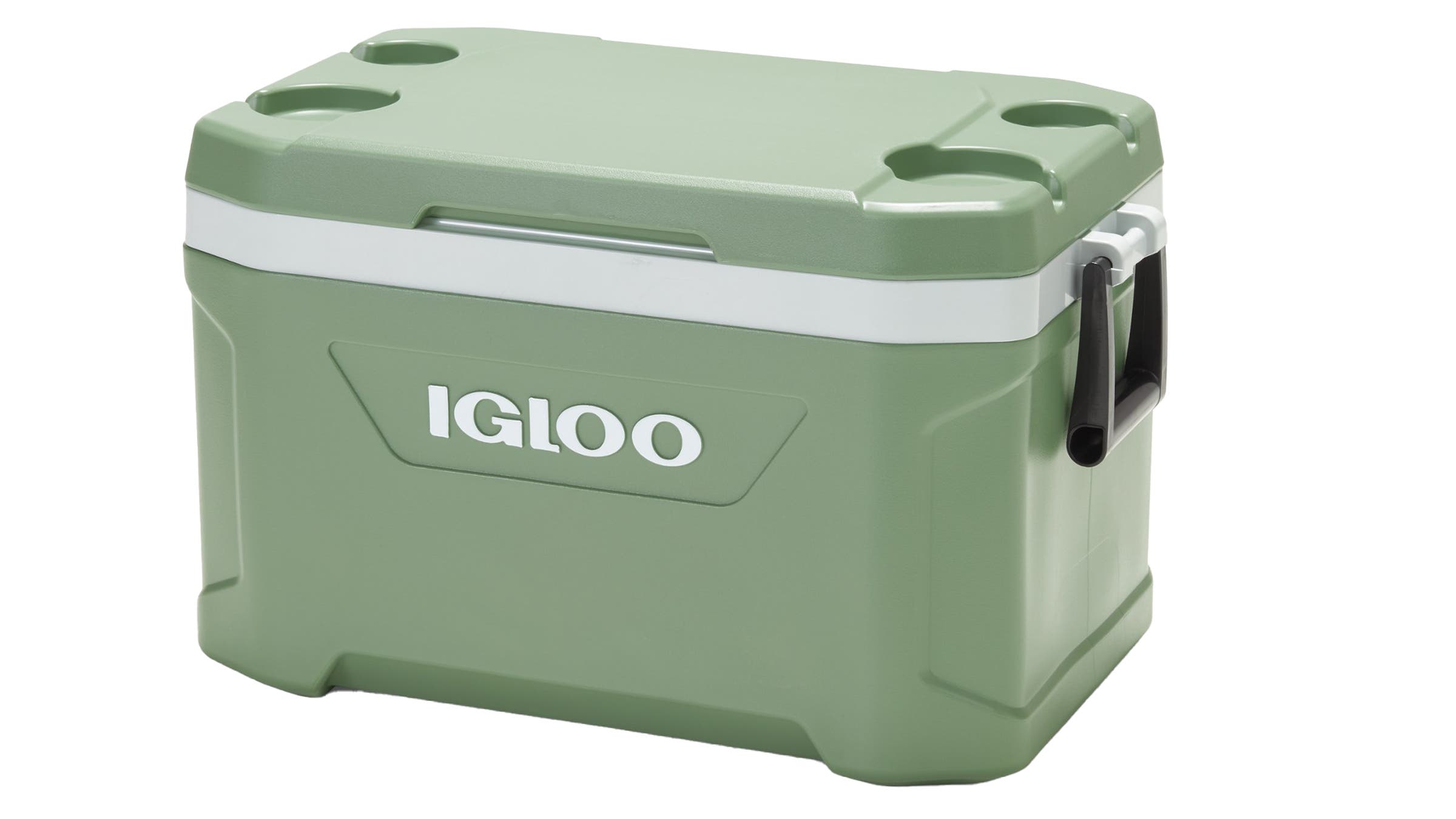
Best Value
Igloo ECOCOOL Latitude 52-Qt Cooler
External Dimensions: 25″ x 15″ x 15″
Capacity: 49 L
Weight: 9.8 lbs
Pros and Cons
⊕ Good bang for your buck
⊕ Sustainable materials
⊗ Not as insulating as the other coolers on this list
⊗ No drain plug
The ECOCOOL Latitude 52-Qt cooler proves that there is still space for a low-tech cooler in a market dominated by $400 beasts that hold onto ice for weeks. For $60, the ECOCOOL did a respectable job of keeping snacks and drinks cold during a 60-degree weekend of camping in Oregon’s Siskiyou Mountains. Would we want to depend on it for a multi-day river trip? No. But that isn’t what this cooler is designed for. Rather, this cooler is made for more casual car camping. Testers reported that the handles didn’t bend under a 50-pound load, and the lid’s solid hinge and sturdy clasps added to its potential longevity. As a bonus, the ECOCOOL is made from post-consumer recycled resin. One feature we would’ve liked to see: A drain plug.
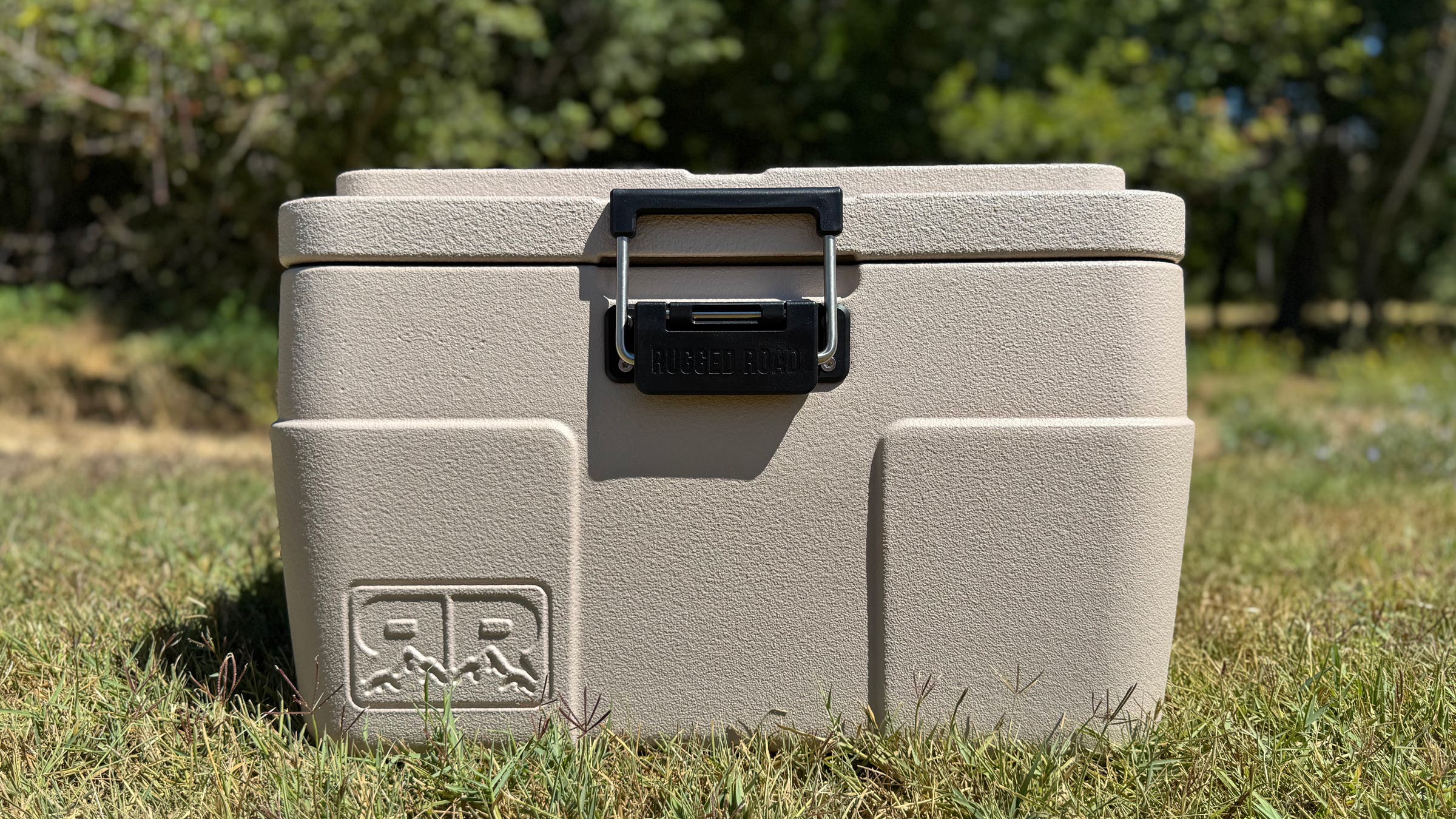
Lightest Weight
Rugged Road 65
External Dimensions: 18″ × 27″ × 15.5″
Capacity: 42 L
Weight: 13 lbs
Pros and Cons
⊕ Incredibly light
⊕ Burly exterior
⊗ Inferior ice retention
Rugged Road’s 65-quart cooler is an optical illusion: The textured matte exterior looks like it’s incredibly heavy, but it’s shockingly light at 13 pounds when empty. That’s less than half the weight of the other coolers in our latest round of tests. While it didn’t retain ice as well as its rotomolded counterparts, it was lightyears better at thermoregulation than most non-rotomolded or metal coolers we tested. During three days in 100-degree heat, it did not retain any ice but kept its contents cool enough that we felt comfortable eating cheese on the last day of the trip. Credit Rigorite, the body’s spray-coated high-density foam that’s found in bombproof doors and armored vehicles. After two trips down the newly undamned Klamath River and multiple rough pack jobs in a truck bed, the Rugged Road 65 showed few signs of wear and tear.
While the latch-free magnetic seal isn’t quite airtight, it’s easy to open the flip top with one hand and it stays secure when closed. Plus, a removable divider doubles as a cutting board or snack tray. The retractable handles are aluminum and surprisingly ergonomic, though they rattle a bit in the back of a moving truck. But weighing roughly the same as a small dog, it’s the only cooler one tester’s seven-year-old daughter was able to transport on her own.
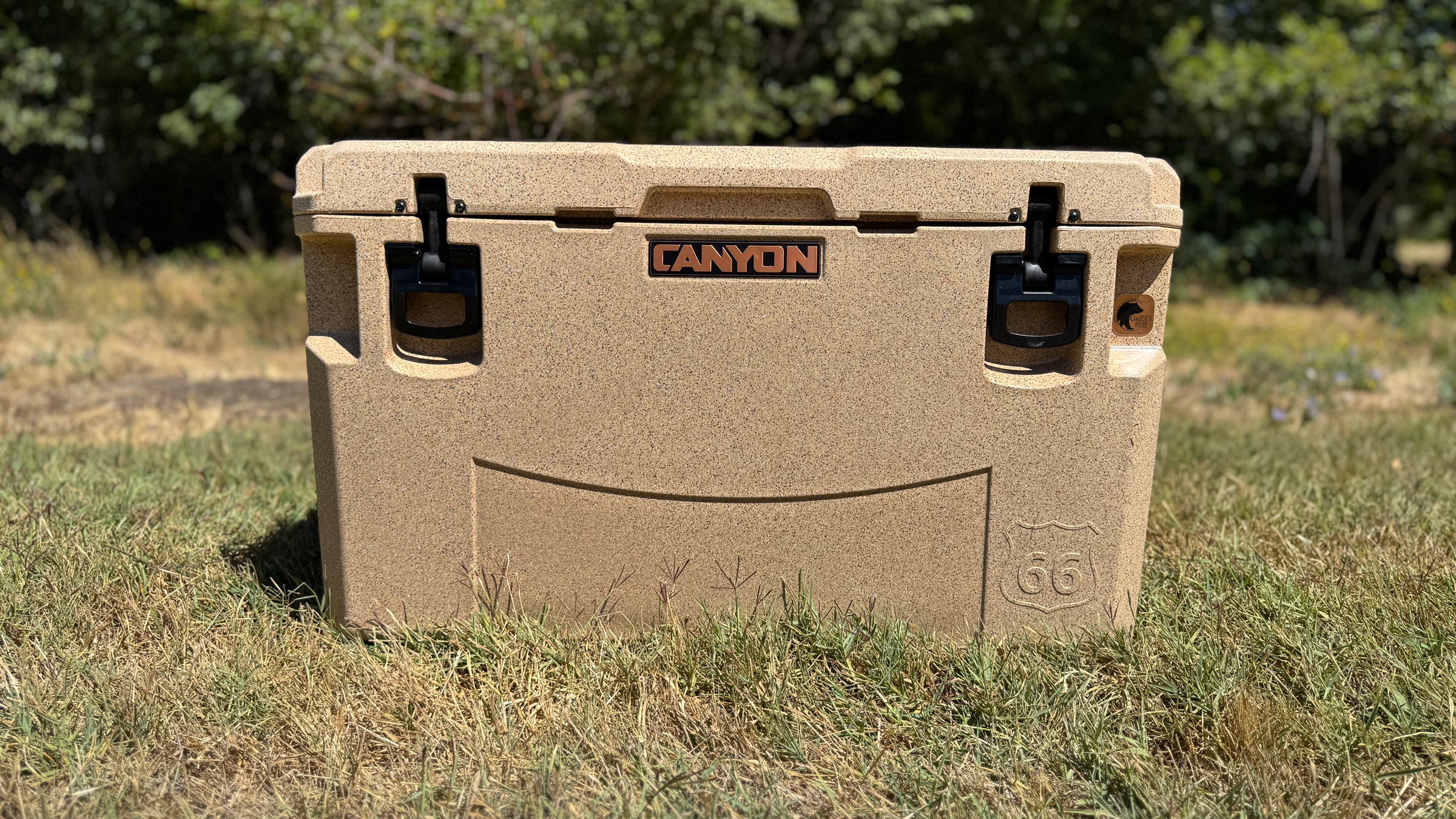
Most Durable
Canyon Pro 65
External Dimensions: 31.25″ × 17.25″ × 18″
Capacity: 62.5 L
Weight: 41 lbs
Pros and Cons
⊕ Durability-focused design
⊕ Intelligent rafting compatible features
⊕ Killer seal
⊗ Heavy
The Canyon Pro 65 is a tank—and not just because the pebbled coyote colorway looks military. This is the cooler we’d take into our roughest testing situations, such as the base of a huge river canyon. At 41 pounds, it’s solid but well-balanced, and it had some of the thickest insulation of any cooler in our test, helping it retain about 70 percent of ice for three full days of 100-plus degree heat near California’s Mt. Shasta. It also kept contents cool during coastal trips when guests constantly opened and closed it for meals and snacks—a surefire way to lose ice quickly.
Overbuilt cam-style latches click in with authority and won’t jar loose, even when strapped down on a raft frame. The rope handles are thick and comfortable to handle, and the single drain plug is positioned to fully empty without lifting the cooler. We also appreciated the interior footprint of the Canyon Pro 65, which includes a dry goods try and divider slot. Another great feature: The optional security lock slots and integrated tie-down channels make the Canyon Pro 65 raft- and roof-rack-ready. The matte finish hides scuffs well, and the branding is low-key enough to appeal to folks who don’t want a giant logo on their gear.
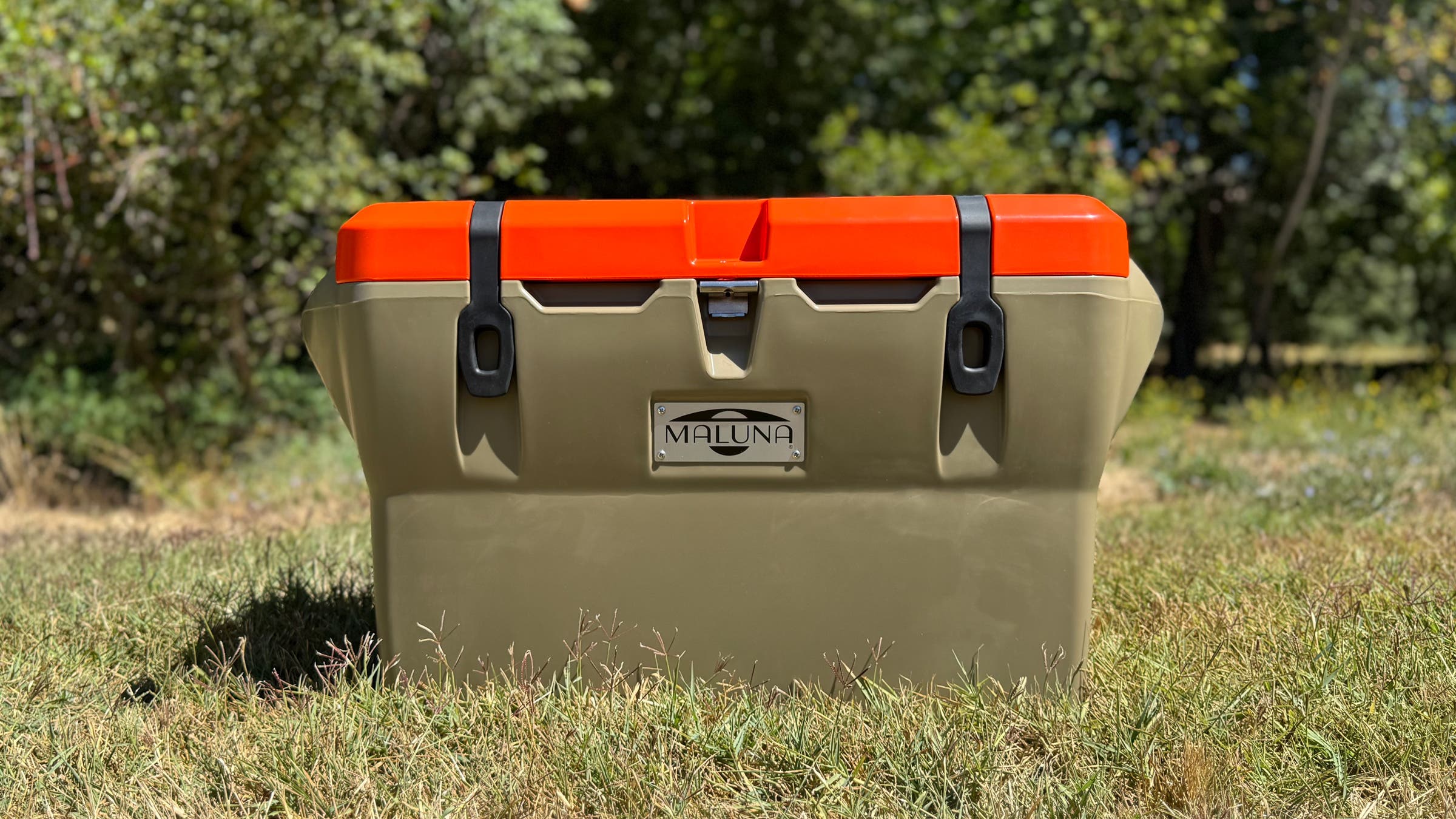
Best Ice Retention
Maluna 50-Quart Cooler
External Dimensions: 31″ × 18″ × 19″
Capacity: 47 L
Weight: 30 lbs
Pros and Cons
⊕ Best insulation of our test
⊕ Sturdy exterior
⊗ Complicated latch system
⊗ Small internal capacity
The Maluna 50 was the insulation champ of this test. On a 102-degree weekend campout in Northern California, it was the only cooler that still contained solid ice after four days. Credit goes to its 2.75-inch-thick pressure-injected insulation and tensioned, self-adjusting cam latch system that creates a literal mechanical seal as the lid compresses. This cooler locks down with a satisfying, audible waft of air leaving the seal. However, the circular latch system took some getting used to since it’s not as intuitive as rubber T-latches. One tester complained about getting it closed when his hands were tired from a big day of rowing. We were quick to overlook this slight inconvenience since the Maluna 50 held the cold better than any other cooler we tested.
At 30 pounds empty, it’s hefty for its nearly 50-liter capacity. The girthy plastic handles, while super burly, made getting a good grip challenging with heavy loads. This meant testers regularly took breaks when transporting it farther than a few dozen steps. But its rotomolded body looked barely worse for wear after rough loading into a raft frame and truck bed. The molded-in, tie-down slots let testers rig the cooler with confidence in a raft, and the single oversized drain plug released meltwater easily. The back of the Maluna 50 uses rubber latches rather than metal pieces, which bodes well for the longevity of this cooler since rubber is less likely to break.
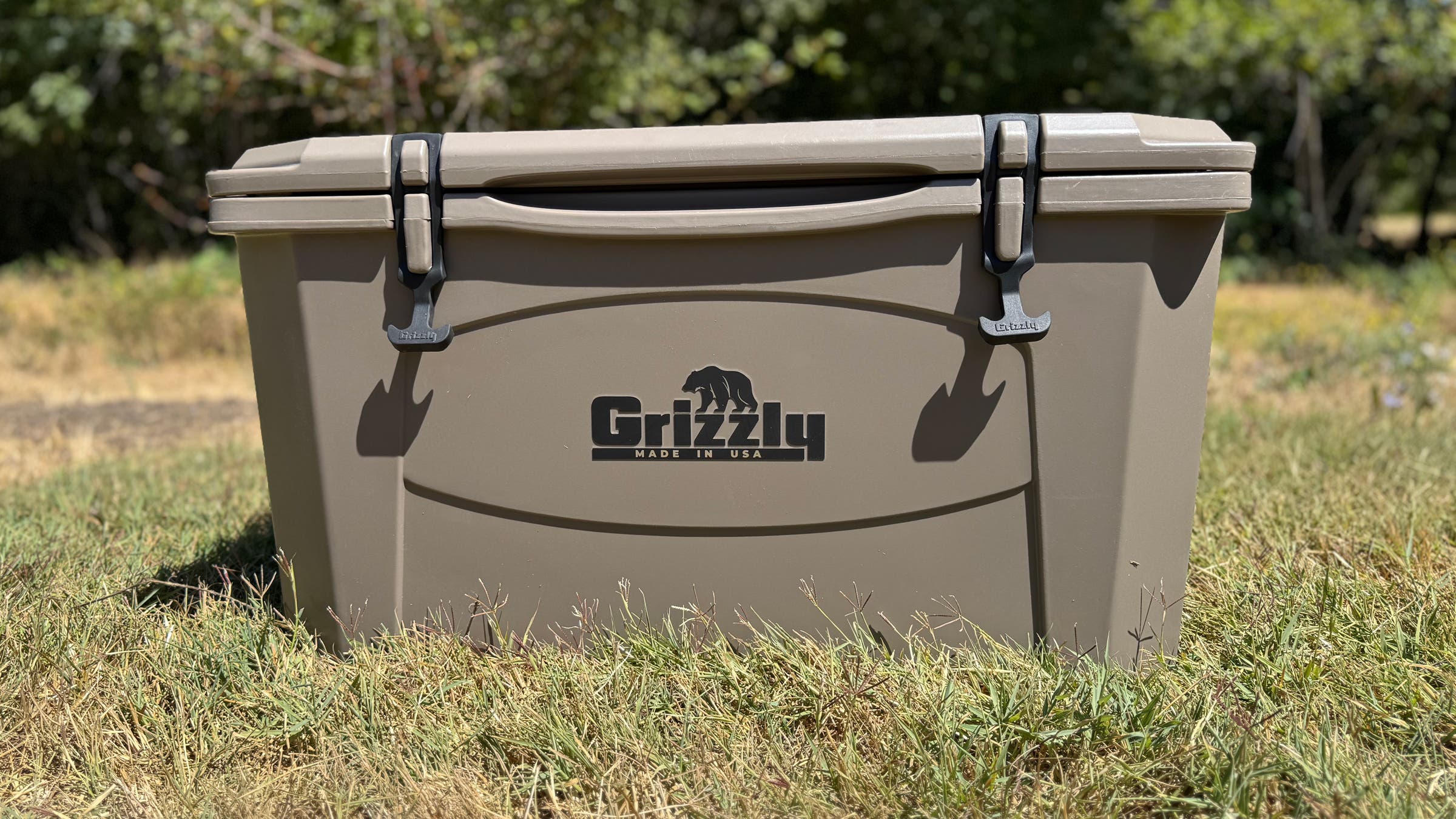
Most Classic Design
Grizzly 60
External Dimensions: 31″ × 17″ × 17″
Capacity: 57 L
Weight: 29 lbs
Pros and Cons
⊕ Reliable construction
⊕ Padded handles
⊗ No extra features
The Grizzly 60 is an American icon. It has a heavy-duty rotomolded body, hefty walls, huge latches, and a certified bear-resistant design that shrugged off bouncing out of the bed of my Tacoma at 17 mph when one tester rushed out of a river campsite to catch a shuttle. At 29 pounds, it’s heavy as hell but we liked the thick padded rope handles, which made carrying into rafts and campsites easy even when weighed down with drinks and food for a family of three.
On paper, its insulation isn’t quite as thick as the Maluna or Canyon, but in real-world use, it held its own. After two days of full sun and highs near 100 degrees on the Klamath, we still had about 60 percent of our ice blocks, which is especially impressive considering how often we were digging into its depths for beer and cheese. The plastic drain plug unscrews easily and the incredibly sturdy latches gave us confidence that it would stay closed even if our lunch boat flipped. The Grizzly isn’t loaded with features like other coolers, but what you lose in trays, magnets, and fancy latches you gain in reliability. Its slightly higher-than-average internal height meant we could pack this thing with food for eight on a camping trip to the far Northern California coast—and as a bonus we could stand bottles of wine with the corks intact.
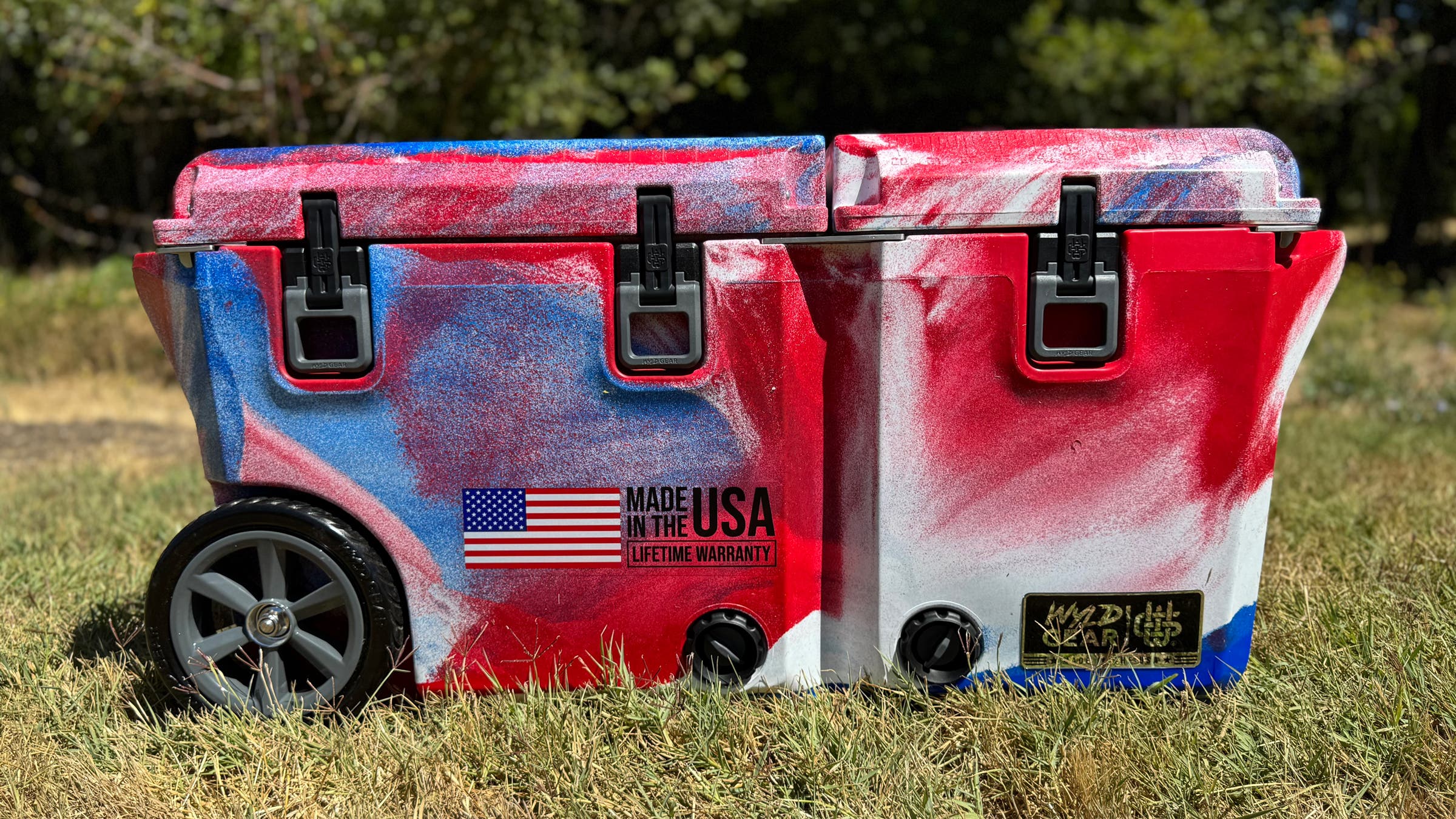
Best Organization
Wyld Gear 65 Freedom Series
External Dimensions: 40″ × 17″ × 19″
Capacity: 61.5 L
Weight: 33 lbs
Pros and Cons
⊕ Dual compartments
⊕ Wheels easily in camp
⊗ Not great for rafting or overlanding
Testers were initially skeptical about the Wyld Gear 65’s dual compartment design, but they grew to love having two different temperature zones. Wyld Gear split the 65-quart capacity into two fully separated and insulated compartments: one 40-quart compartment and one 25-quart section. While other coolers we tested have various ways of splitting up interior space, this design was unique. The smaller side kept drinks refrigerator-cold even in triple digits, while the larger side kept sandwich fixings crisp but not frosty.
Dual drain plugs (one on each side), a built-in bottle opener, two dry goods trays, and a pressure-release are smartly designed to be actually useful. The plastic body is rotomolded with deep tie-down channels and rubber feet that kept the cooler stable in truck beds. While not ideal for raft trips because of its wheels and towing handle, the Wyld Gear 65 was a favorite at camp. The insulation thickness is right up there with the top performers on this list. At 33 pounds, it’s not light, but the padded rope handles made the weight manageable to carry and the added accessories made the extra heft feel justified. The lid’s seal wasn’t quite as tight as Maluna’s or Grizzly’s, and the interior felt slightly tighter than 65 quarts, but this is the cooler we would pick for a big tailgate party or car camping revelry.
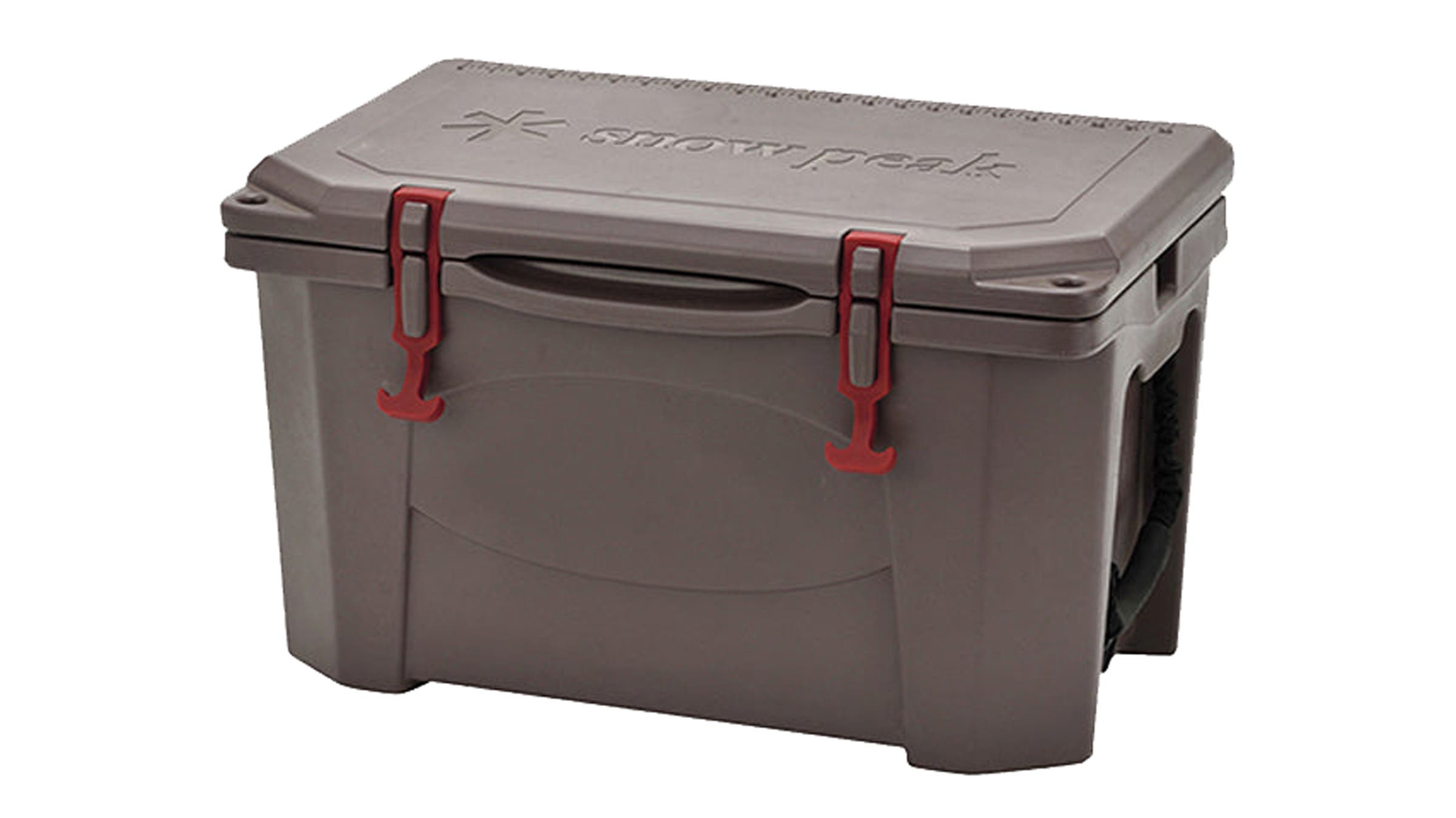
Best for True Connoisseur
Snow Peak Hard Rock 40-Qt Cooler
External Dimensions: 25″ x 16″ x 15″
Capacity: 38 L
Weight: 25 lbs
Pros and Cons
⊕ Beautiful design
⊕ Thoughtfully built to last forever
⊗ Expensive
The Hard Rock 40 is a collaboration between two brands with sterling reputations: Grizzly Coolers’ products are bomb proof, and Snow Peak’s Japanese aesthetic is sleek. The result is a cooler so sexy that four testers did not even bat an eye at the eye-watering price. The bear-proof rotomolded cooler easily kept our perishables cold on a four-day camping trip in California’s North Coast, retaining about 80 percent of the ice block in temps with highs in the 70s.
Testers noted that the Bear Claw Latch System rubberized closures, which wrap over and around rectangular knobs to lock down the cooler, made the cooler impossible to unintentionally crack open and let air out when closed down. Those closures also look cool as hell with contoured edges and a low-profile design that integrates seamlessly with the cooler body. Its matte finish and subtle, claw-like silhouette give it a tactical-meets-minimalist look that’s both tough and sleek. Not only does this closure design make the cooler virtually impervious to animals without prehensile fingers, it makes it easy to latch and unlatch with one hand. The drain plug is just as easy to crank open and closed. Like the other premium coolers in this category, it is rotomolded with a hefty serving of polyethylene, which makes it impervious to the beating we delivered during months of car camping and gives it lifelong durability.
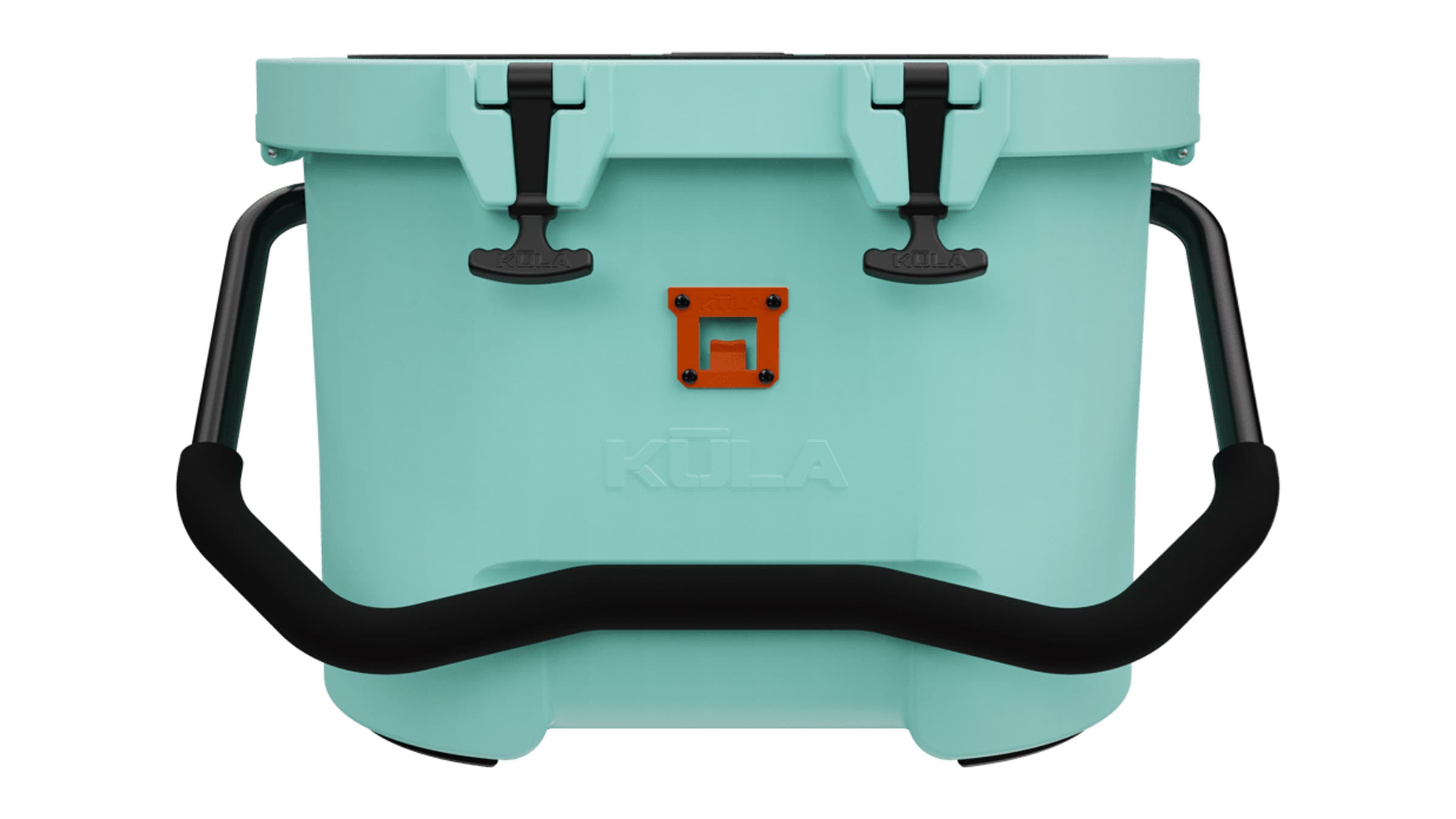
Best for Boaters
Bote Kula 10
External Dimensions: 24” × 15″ × 19″
Capacity: 38 L
Weight: 24 lbs
Pros and Cons
⊕ Rounded sides packed well into crowded boats
⊕ Top holds two cans steady on rocking boats
⊗ Does not play well with ice blocks
⊗ Handle is too big for packing tightly
Boaters notoriously pack a lot of drinks (usually beer), and the Bote Kula 10 has the capacity for quenching their thirst. “This cooler was built to party,” reported one tester, who found the included bottle opener easy to use and appreciated the magnetic aluminum can holders while rowing down a Class II stretch of river. Teetotalers, on the other hand, found the bottle opener to be a little much. Cylindrical beverages, such as cans of beer or bubbly water, packed efficiently against the interior’s rounded corners. Those same rounded corners on the exterior helped it squeeze into the rarely square, open spaces of the 13.5-foot Sotar Raft we tested it in. The only downside of the rounded body was it did not play well with blocks of ice that typically tuck beautifully into the corners of classic square coolers. This posed a problem on our hottest camping trip on the Klamath River, in which bags of crushed ice didn’t stand a chance against triple digit temps.
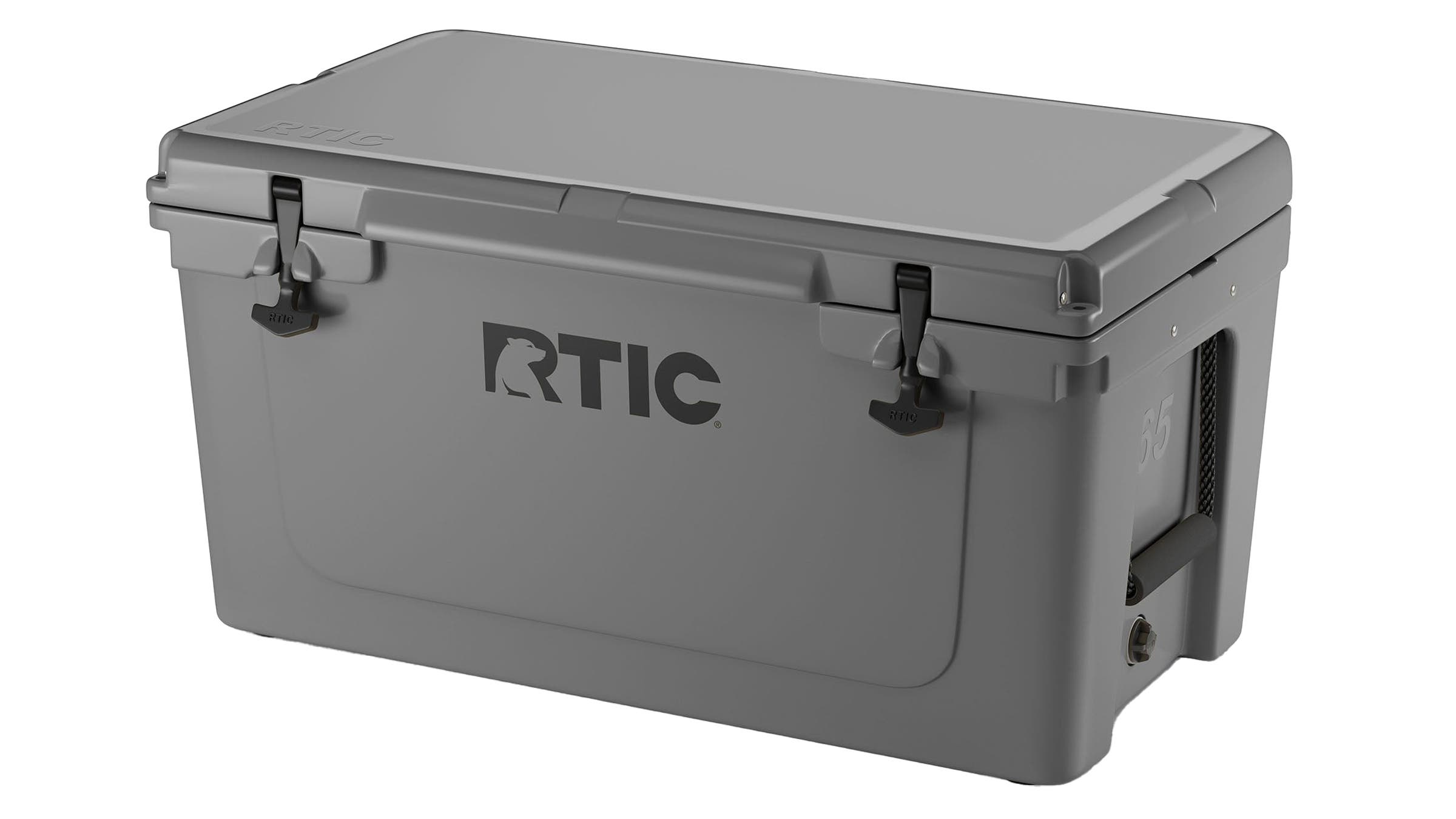
Best Braun for the Buck
RTIC 65 QT Ultra-Tough Cooler
External Dimensions: 31.62” × 17.5” × 17”
Can Capacity: 61.5 L
Weight: 38 lbs
Pros and Cons
⊕ Incredible durability throughout
⊕ Smart accessories
⊗ So heavy
With an admirable 3 inches of foam built into the body, the Ultra Tough held its own in terms of ice retention against similarly-sized and rotomolded Yeti coolers but at a more affordable price point. We were also impressed with this cooler’s padded rope handles, which allowed for comfortable carry even when filled with a family of three’s food and drinks for a weekend camping trip. Every tester agreed that having two drain plugs was a significant bonus for both removing excess water and cleaning. It drained two blocks’ worth of melted ice in under five minutes and removed enough of the water that we only had to wipe it with a washrag upon our return. Non-skid feet added a little extra traction when loaded into the back of a truck.
At more than $200, this RTIC cooler is still not cheap, but it’s $150 less than its Yeti counterparts and has a solid chance of lasting just as long thanks to durable design details, from the hardy clasps to the thick rope handles. One downside of all of that burl? At nearly 38 pounds empty, it was the heaviest cooler we tested—even heavier than one with a built-in refrigeration system.
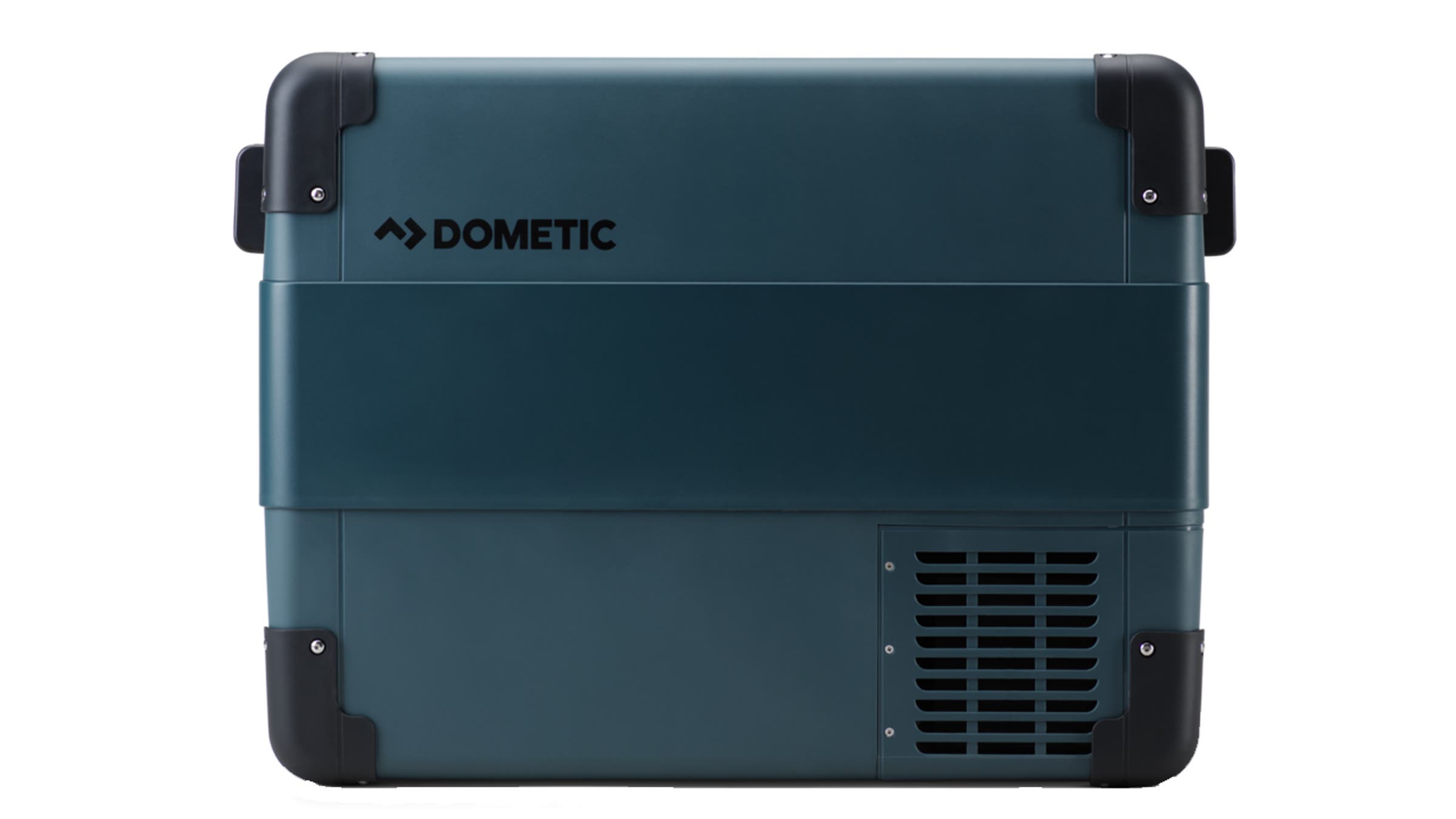
Best For Vanlifers
Dometic CFX-2 45
External Dimensions: 16” x 19” x 27”
Capacity: 45 L
Weight: 40 lbs
Pros and Cons
⊕ Really efficient
⊕ Can keep ice indefinitely with power source
⊗ Need access to power
⊗ Lid can make accessing food at bottom difficult
Built with integrated cooling systems, Dometic coolers are marvels of modern cooler science. Dometic’s game-changing, hyper-efficient electric coolers essentially invited mini-fridges into our vans, truck conversions, and even campsites—as long as you have a converter or generator to plug them in to. But what we love about the CFX-2 45 doesn’t have to do with electronics; it’s that it’s tough as hell. Our test model spent a vast majority of its time in the back of a 2020 Ford Transit, pulling double duty as a cooler and a step-stool for kids ranging from 35 to 65 pounds. We never had to worry about denting or cracking it. Credit goes to the reinforced corners, stainless steel hinges, heavily fortified plastic folding handles, and thick lid.
With the ability to connect to 12/24 volt car DC as well as 100-240 volt home AC, testers plugged it in at home before packing up the night before to maximize charge and coolness. Once on the road, it stayed plugged in at all times to retain cold air. Since the lid swings up from the top, rather than off the side, testers noted that food at the bottom can be tricky to reach. But that slight annoyance didn’t bother us too much during a two-week cross country trip. Our only real complaint is the $800 price tag, but it’s hard to even fault Dometic for that since the CFX-2 45 is essentially a portable mini fridge.
| Product | Price | Volume | Pros | Cons |
| Yeti Roadie 32 Wheeled | $375 | 32 L | Highly portable; durable; good ice retention | Tall height makes for awkward packing |
| Igloo ECOCOOL Lattitude 52-Qt | $60 | 49 L | Good bang for your buck; sustainable materials | Not as insulating as the other coolers on this list; no drain plug |
| Rugged Road 65 | $375 | 42 L | Incredibly light; burly exterior | Inferior ice retention |
| Canyon Pro 65 | $370 | 62.5 L | Durability-focused design; intelligent rafting compatible features; killer seal | The heaviest option |
| Maluna 50-Quart Cooler | $340 | 47 L | Best insulation of our test; sturdy exterior | Sturdy exterior Complicated latch system; small internal capacity |
| Grizzly 60 | $360 | 60 L | Reliable construction; padded handles | No extra features |
| Wyld Gear 65 Freedom Series | $400 | 61.5 L | Dual compartments; wheels easily in camp | Not great for rafting or overlanding |
| Snow Peak Hard Rock 40-Qt | $648 | 38 L | Beautiful design; thoughtfully built to last forever | Expensive |
| Bote Kula 10 | $389 | 38 L | Rounded sides packed well into crowded boats; top holds two cans steady on rocking boats | Does not play well with ice blocks; handle is too big for packing tightly |
| RTIC 65-Qt Ultra Tough | $269 | 61.5 L | Incredible durability throughout; smart accessories | So heavy |
| Dometic CFX-2 45 | $800 | 45 L | Really efficient; can keep ice indefinitely with power source | Need access to power; lid can make accessing food at bottom difficult |
Other Coolers We Tested
- Oyster Tempo Cooler ($445): This iceless cooler blew testers’ minds with how quickly it dropped in temps when we threw cold packs in it. But the stainless steel exterior proved susceptible to scratches and dings.
- Igloo IMX 70 Qt Cooler ($250): We loved this cooler’s hardy design details, like the metal rope handles; but in the end we decided the RTIC 65 was a better overall choice in this size and price class.
- RTIC 32 qt Ultra Light Cooler ($159): RTIC did a great job of lightening up this cooler while maintaining fantastic thermoregulation with its super deep, heavily insulated lid, but it did not perform as well in either ice retention or durability as its heavy duty RTIC counterpart that made this list.
Products to Avoid
Single Use Coolers: To be honest, coolers have traditionally been a pretty non-eco friendly outdoor gear category. Their plastic exterior and foamy plastic insulation does not have the best track record for the earth or the health of those who manufacture it. A case can be made that most coolers have some environmental blood on their latches. With that said, nothing is more wasteful than a single-use cooler. On top of going immediately into a landfill, they don’t really do anything in terms of insulating their contents either. They are both wasteful and pointless.
How to Choose a Cooler
What Size Cooler Is Best?
Pick a cooler that’s big enough for your average trip length. If you get a cooler that is too small, you will go hungry, but a cooler that is too big will create coolness-wasting dead space. Each trip is different and group size can change things, but as a very general rule of thumb, I like to bring a 20- to 45-liter cooler on day- to weekend trips for my family of three, and a 55- to 70-liter cooler on trips lasting three days to a week.
Do You Really Need an Expensive Cooler?
This is a really tough question to answer as an individual who is obsessed with fancy coolers but spent most of his life using the cheapest coolers available. The short answer? If you are a reasonable drive from a place with ice and are camping for a weekend, you don’t need a cooler that can hold a single block of ice for a fortnight. Is it a good investment to buy a durable cooler (usually an accompanying factor in a pricey cooler) even if you don’t need it to retain ice forever? Yes, I think spending some extra dough is worth it.
What’s the Best Way to Pack a Cooler?
A cooler is only as good at retaining ice as the person using it. If you have a $400 cooler built to keep ice solid through the entirety of a Grand Canyon trip, but you leave it wide open in the sun for an hour on a super hot day, you just robbed that cooler of its ability to keep its contents cold.
I could write another 2,000 words on cooler maintenance, but there are three main rules you should follow: One: Try to reduce the cooler’s temperature before your trip, and keep it in the shade. The heat of the cooler itself drastically changes performance. Two: Keep the lid shut as much as possible. That means grabbing food with purpose rather than rummaging around. It also means grabbing multiple things at a time, such as all your sandwich fixings, and then immediately closing the lid rather than opening it once for ham, once for mayo, and once for cheese. Three: If your cooler has latches, keep them tight after every opening.
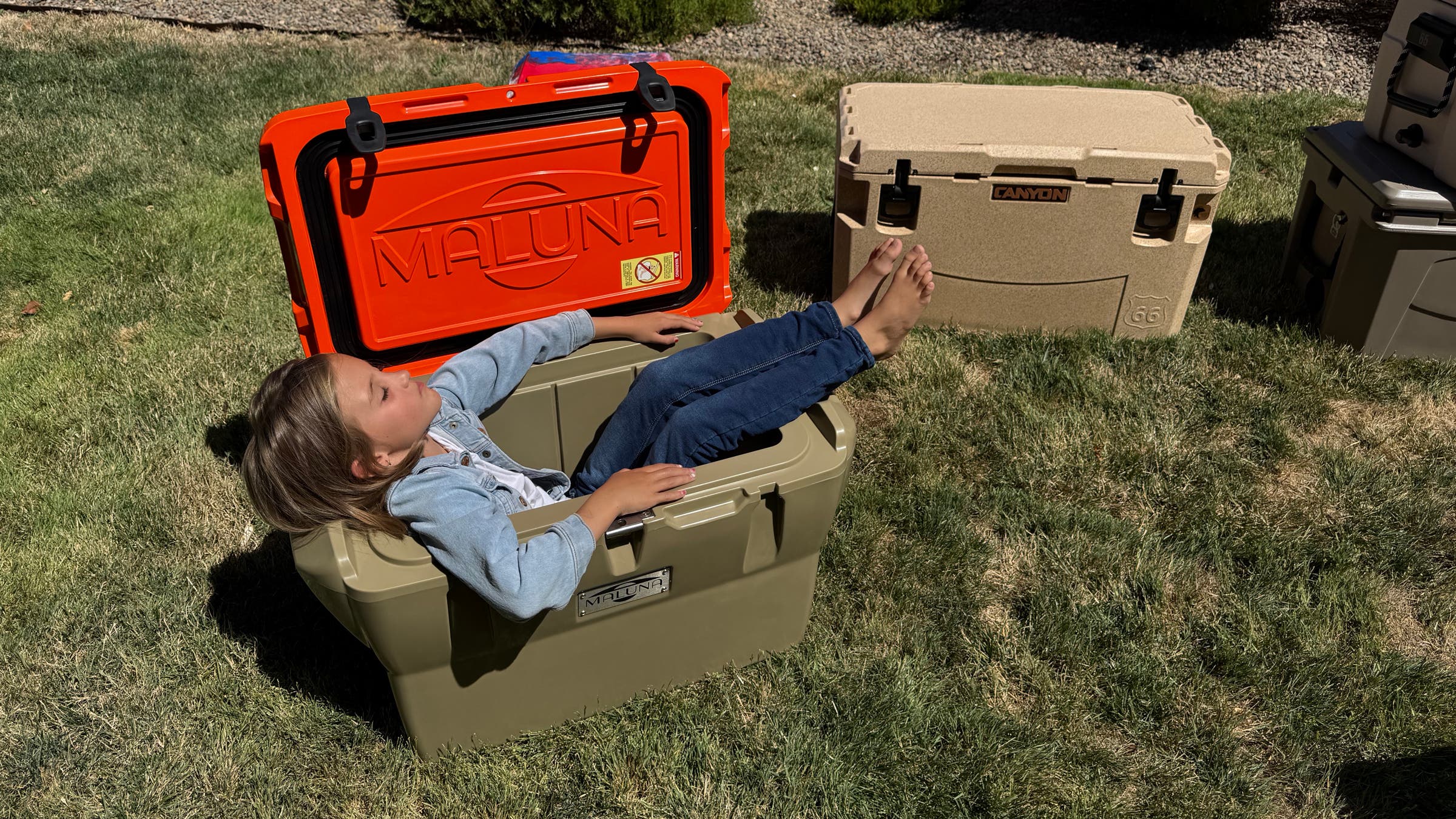
How We Test
- Number of coolers tested: 12
- Number of testers: 12
- Days camped: 30+
- Meals eaten: 80+
- Days rafted: 6
- Trips to the beach: 10
- Number of coolers accidentally left in a side yard for 5 months: 1
For the past 12 months, we’ve been busy testing 21 hard-sided coolers in the 40- to 60-liter range to bring you this list of the best coolers for weekend adventures, whether you’re packing for a family camping trip, the beach, or a backyard barbeque. Testers used each cooler for six weeks, then reported back about how each performed via feedback form. When evaluating each cooler, we mainly considered factors like ice retention, durability, and capacity, though we also spent hours poring over the finer details like the handles, closures, and drain plugs to tease out the nuance of what made each cooler worthy of this guide.
Meet Our Testers
Joe Jackson made a name for himself testing coolers during his first year working at Outside over a decade ago. Ever since he has been obsessed with the intricacies of closed cell foam, durable rotomolding, and keeping every goddamn lid closed to not let out all of the insulated air. His love of cooler testing and maintenance started during the ten years he worked as a raft guide and was solidified the year he managed a rafting company that cooked all of its meals out of food stored in coolers.
Sarah Jackson absolutely and utterly doesn’t fuck around when it comes to cooler packing and maintenance. She is the person everyone asks where the cheese is packed (even if it isn’t in her cooler) and has been known to move a cooler half a dozen times to keep it in the deepest shade on a hot campsite. She has tested, loved, and even destroyed coolers with her husband, Joe, for over a decade.
Zach “Red” Williams uses his 2020 Ford Transit and teacher’s schedule to maximize adventure for his family of four. He tested coolers for us on multi-week road trips, weekend camping trips, tailgating in ski resort parking lots, and rafting trips.
More Gear Reviews
The 8 Best Instant Coffees for Backcountry Adventurers
Yeti’s New Hondo Beach Chair, Tested and Reviewed
The Best Portable Camping Chairs for Fireside Lounging